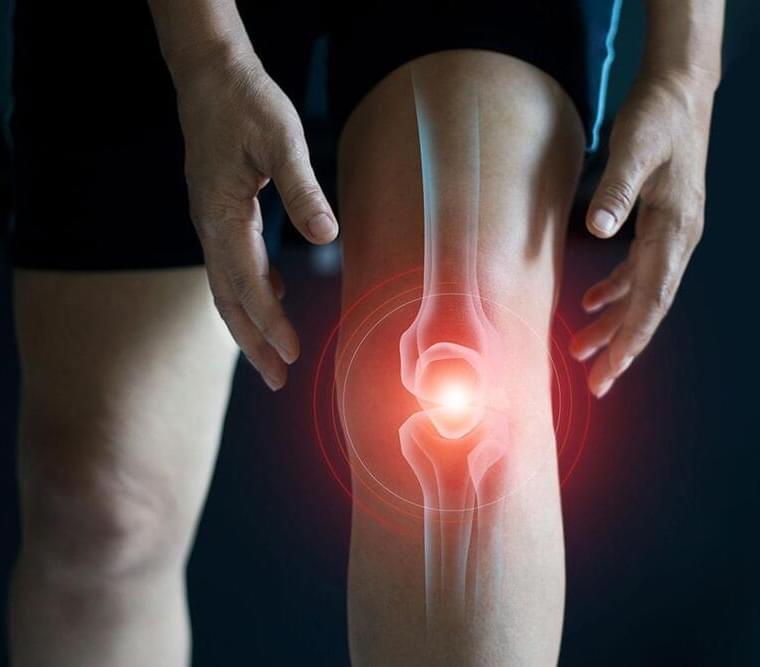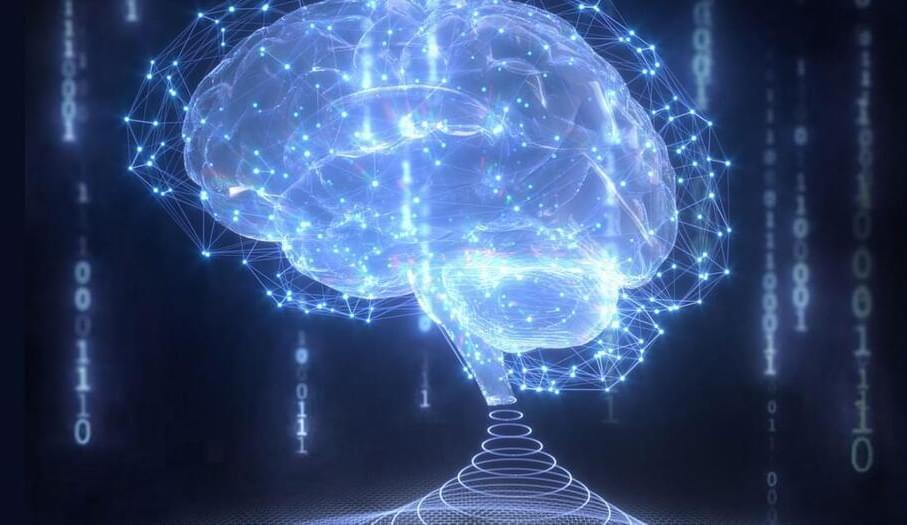Last year, I edhost a thrilling conversation between @SabineHossenfelder, Carlo Rovelli, and Eric Weinstein as they debate quantum physics, consciousness and the mystery of reality. \
\
IAI Live is a monthly event featuring debates, talks, interviews, documentaries and music. LIVE. \
Watch the original video \
\
See the world’s leading thinkers debate the big questions for real, LIVE in London. Tickets: https://howthelightgetsin.org/\
\
To discover more talks, debates, interviews and academies with the world’s leading speakers visit https://iai.tv/\
\
We imagine physics is objective. But quantum physics found the act of human observation changes the outcome of experiment. Many scientists assume this central role of the observer is limited to just quantum physics. But is this an error? As Heisenberg puts it, \.
Category: neuroscience – Page 448

Neurogrid simulates cortical cell-types, active dendrites, and top-down attention
A central challenge for systems neuroscience and artificial intelligence is to understand how cognitive behaviors arise from large, highly interconnected networks of neurons. Digital simulation is linking cognitive behavior to neural activity to bridge this gap in our understanding at great expense in time and electricity. A hybrid analog-digital approach, whereby slow analog circuits, operating in parallel, emulate graded integration of synaptic currents by dendrites while a fast digital bus, operating serially, emulates all-or-none transmission of action potentials by axons, may improve simulation efficacy. Due to the latter’s serial operation, this approach has not scaled beyond millions of synaptic connections (per bus). This limit was broken by following design principles the neocortex uses to minimize its wiring. The resulting hybrid analog-digital platform, Neurogrid, scales to billions of synaptic connections, between up to a million neurons, and simulates cortical models in real-time using a few watts of electricity. Here, we demonstrate that Neurogrid simulates cortical models spanning five levels of experimental investigation: biophysical, dendritic, neuronal, columnar, and area. Bridging these five levels with Neurogrid revealed a novel way active dendrites could mediate top-down attention.
K.B. and N.N.O. are co-founders and equity owners of Femtosense Inc.
Transcending Biology: Reverse Engineering the Brain
Non-personalized content and ads are influenced by things like the content you’re currently viewing and your location (ad serving is based on general location). Personalized content and ads can also include things like video recommendations, a customized YouTube homepage, and tailored ads based on past activity, like the videos you watch and the things you search for on YouTube. We also use cookies and data to tailor the experience to be age-appropriate, if relevant.
Select “More options” to see additional information, including details about managing your privacy settings. You can also visit g.co/privacytools at any time.
Finding meaning at the quantum level
Kmele steps inside Fermilab, America’s premiere particle accelerator facility, to find out how the smallest particles in the universe can teach us about its biggest mysteries.\
\
This video is an episode from @The-Well, our publication about ideas that inspire a life well-lived, created with the @JohnTempletonFoundation.\
\
Watch the full podcast now ► • Dispatches from The Well \
\
According to Fermilab’s Bonnie Flemming, the pursuit of scientific understanding is “daunting in an inspiring way.” What makes it daunting? The seemingly infinite number of questions, with their potentially inaccessible answers.\
\
In this episode of Dispatches from The Well, host Kmele Foster tours the grounds of America’s legendary particle accelerator to discover how exploring the mysteries at the heart of particle physics help us better understand some of the most profound mysteries of our universe.\
\
Read the video transcript ► https://bigthink.com/the-well/dispatc…\
\
00:00:00 — The Miracle of Birth\
00:04:48 — Exploring the Universe’s Mysteries\
00:09:20 — Building Blocks of Matter and the Standard Model\
00:13:35 — The Evolving Body of Knowledge\
00:17:39 — Understanding the Early Universe\
00:22:05 — Reflections on Particle Physics\
00:25:34 — The Extraordinary Effort to Understand the Small\
00:29:59 — From Paleontology to Astrophysics\
00:33:40 — The Importance of the Scientific Method and Being Critical\
\
\
About Kmele Foster:\
\
Kmele Foster is a media entrepreneur, commentator, and regular contributor to various national publications. He is the co-founder and co-host of The Fifth Column, a popular media criticism podcast.\
\
He is the head of content at Founders Fund, a San Francisco based venture capital firm investing in companies building revolutionary technologies, and a partner at Freethink, a digital media company focused on the people and ideas changing our world.\
\
Kmele also serves on the Board of Directors of the Foundation for Individual Rights and Expression (FIRE).\
\
\
Read more from The Well: \
Actually, neuroscience suggests “the self” is real\
► https://bigthink.com/the-well/actuall…\
Mary Shelley’s Frankenstein can illuminate the debate over generative AI\
► https://bigthink.com/the-well/mary-sh…\
Few of us desire true equality. It’s time to own up to it\
► https://bigthink.com/the-well/few-des…\
\
\
About The Well\
Do we inhabit a multiverse? Do we have free will? What is love? Is evolution directional? There are no simple answers to life’s biggest questions, and that’s why they’re the questions occupying the world’s brightest minds.\
\
Together, let’s learn from them.\
\
\
\
Join The Well on your favorite platforms:\
► Facebook: https://bit.ly/thewellFB \
► Instagram: https://bit.ly/thewellIG

Unveiling the Mystery of “Unseeing” — New Research Sheds Light on Visual Masking Phenomenon
A recent study published in Nature Neuroscience has made significant strides in understanding visual masking, a phenomenon that plays a crucial role in how we perceive, or rather “unsee,” things. This study not only illuminates aspects of conscious perception in the brain but also demonstrates that this phenomenon occurs in both humans and mice.
Visual masking occurs when a person does not consciously perceive an image because another image is shown in quick succession. For effective masking, the first image must appear and disappear swiftly, followed by the second image within approximately 50 milliseconds.

NIH study shows elevating NAD+ with NR supplementation effectively reduces inflammation
Persistent chronic inflammation – also recognized as metaflammation or inflammaging – emerges as a consistent factor in ailing populations, in conditions correlated with age-related deterioration and even in ostensibly robust individuals. This phenomenon has been correlated with the onset of autoimmune disorders such as psoriasis and lupus, as well as chronic diseases including diabetes, cardiovascular disease, Alzheimer’s and Parkinson’s, among others. Investigations have substantiated that environmental and lifestyle variables such as smoking, a poor diet, physical inactivity and lack of or poor quality sleep can contribute to the perpetuation of chronic underlying inflammation.
Nicotinamide adenine dinucleotide (NAD+) is a critical coenzyme; vital for the functionality of all living cells, the preservation of intracellular NAD+ pools plays a crucial role in supporting cellular and metabolic processes. Key among these processes is the production of cellular energy, adenosine triphosphate (ATP), and DNA repair. Research indicates that a decrease in NAD+ levels is linked to compromised inflammatory responses and innate immune dysfunction. This implies that the levels of NAD+ may play a critical role in the operational efficacy of immune cells.
NR is an efficient NAD+ precursor; clinically proven to increase NAD+ safely and effectively it has become a popular supplement, and there is a growing body of clinical evidence demonstrating the anti-inflammatory effects of NR supplementation (either alone or in combination with other ingredients) for healthy, older adults, or those with inflammation-related disorders [4]. Indeed, NR supplementation has potential for more robust effects among the elderly and diseased populations as they tend to have compromised NAD+ and a higher inflammatory status.
Neanderthal DNA used to grow a ‘mini-brain’
A team of scientists in Basel believes this will open up new lines of research.

